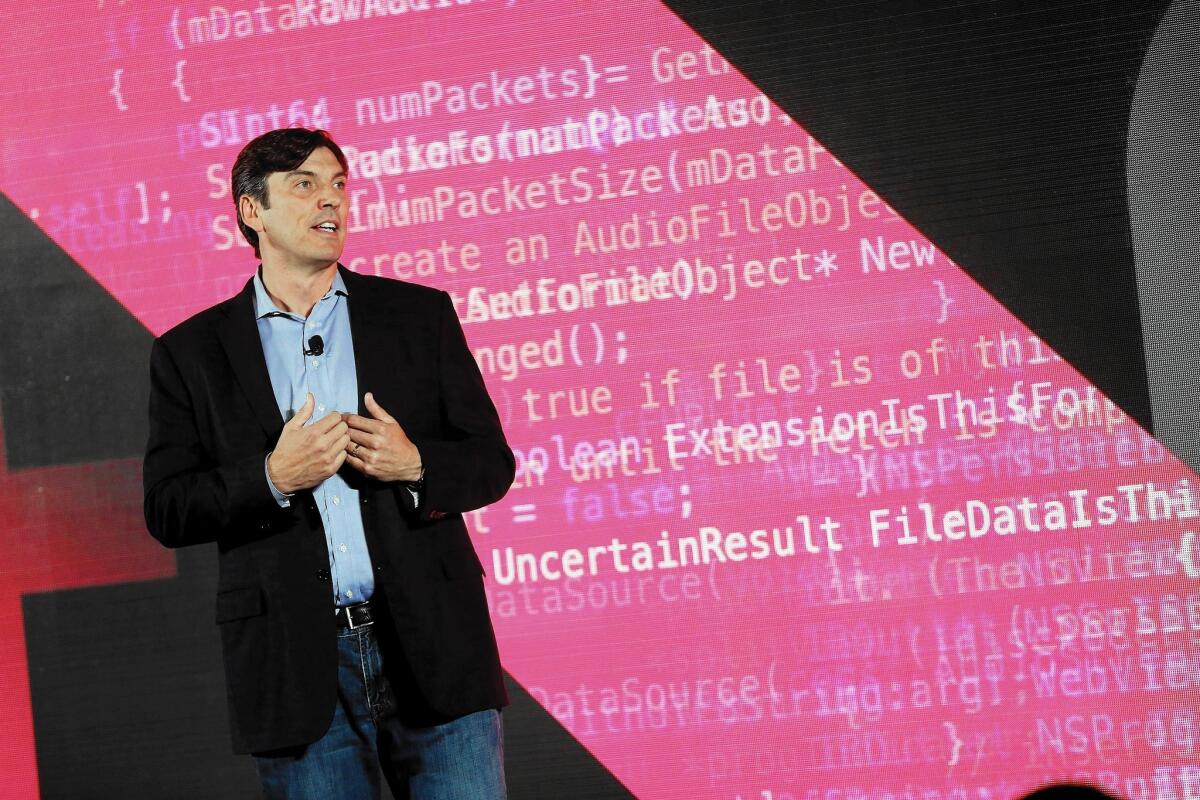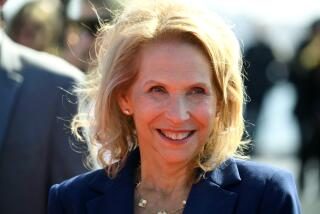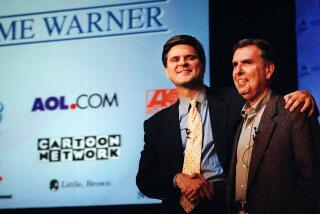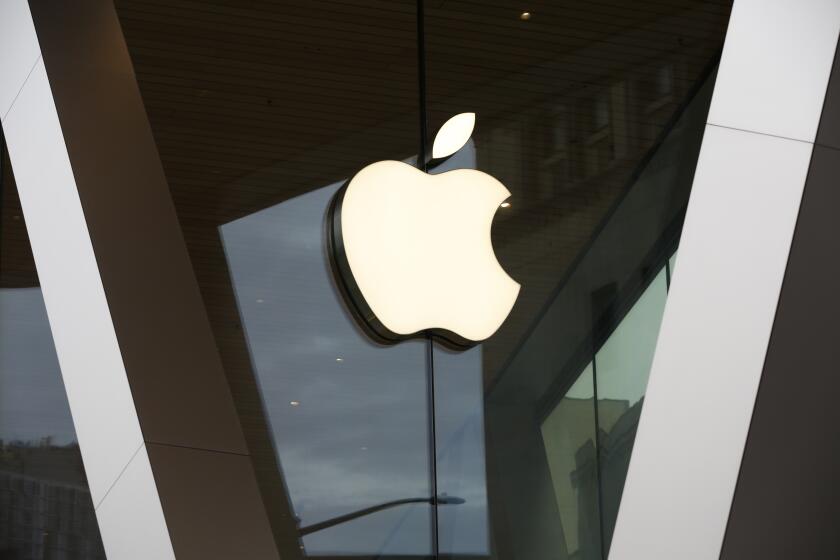How Tim Armstrong steered AOL back to the future

- Share via
In 2009, when Tim Armstrong took over as chief executive of AOL Inc., he faced a daunting task: Turn around a company that had gone from an Internet pioneer to near obsolescence in less than a decade.
Six years later, Armstrong has not only revived AOL, he reinvented it, creating a thriving digital media company focused on online content, original videos and advertising technology. His efforts culminated this week when Verizon Communications Inc., the nation’s No. 1 wireless carrier, agreed to buy AOL for $4.4 billion.
“It’s pretty remarkable, honestly,” said Andrew McNellis, an analyst at investment firm Evercore ISI in New York. “He took an asset that was in decline and built it back up with investments in growth areas that ultimately proved useful.”
Although his decision to leave Google Inc., where he was the president of the Americas operations, to lead dowdy AOL surprised many at the time, Armstrong was optimistic from the start.
“My wife asked me one question when I took the AOL job,” he recalled during a CNBC interview Tuesday after the Verizon deal was announced. “‘Do you know what you’re doing and do you know that you’re going to be able to get the people to help turn the company around?’ And I said yes.”
It was a tall order.
AOL was one of the first subscription-fee, dial-up providers in the early years of the commercial Internet. With its popular email service, online chat rooms and news-filled homepage, the company flourished to become one of the Internet’s first success stories. It was such a powerhouse that it acquired media giant Time Warner in 2001, forming AOL Time Warner in a $147-billion deal that created the world’s largest media company at the time.
But the dot-com bust slammed AOL as it struggled to evolve as online access shifted from dial-up subscriptions to high-speed broadband connections.
While many old-school Internet companies strain to adapt to changing consumer preferences in an increasingly mobile world — Myspace and Yahoo among them — former colleagues and analysts say that AOL avoided that fate largely thanks to Armstrong.
First, he untangled AOL from its disastrous acquisition of Time Warner. Within months, AOL was spun out from Time Warner as a separate publicly traded company.
He added the digital local news division he founded, Patch Media, to the AOL family and acquired popular blogs, including the Huffington Post and TechCrunch, to bolster the company’s content. AOL invested in video, with original programming such as “The Future Starts Here” and “Park Bench With Steve Buscemi,” which both earned Emmy nominations last year.
But his biggest move was building new advertising platforms for an increasingly digital and mobile world, both in-house and through acquisitions.
“He understood the business in a way that relatively few people in his position have ever demonstrated, and that’s made most clear by the re-focus of the company toward ad tech,” said Brian Wieser, senior analyst at Pivotal Research Group. “He was paying attention.”
In particular Armstrong, 43, latched on to a burgeoning sector of the ad industry: programmatic advertising, the automated buying and selling of ads online. The segment has seen explosive growth, increasing 136% to $10 billion in the U.S. last year, according to EMarketer. This year, it is expected to grow an additional 49% to reach nearly $15 billion — or more than half of all digital display advertising.
“AOL skated to where the puck was going,” Armstrong told CNBC.
Under Armstrong, AOL bought video advertising platform Adap.tv, Santa Monica Internet personalization specialist Gravity and Santa Monica marketing optimization platform Convertro. It also launched an ad platform called One, a marketplace where advertisers bid for space across mobile and conventional websites, including Facebook and Twitter. The automated marketplace tracks ads across mobile, desktop and television screens, and advertisers can purchase ad time according to that data.
“For us, the principal interest was around the ad tech platform that Tim Armstrong and his team have done a really terrific job building,” John Stratton, Verizon’s president of operations, said at an investor conference Tuesday.
AOL’s stock gained 25 cents to $50.77 a share Wednesday after soaring 19% on Tuesday after the Verizon announcement.
Under Armstrong’s reign, the stock has about doubled in price since it began trading around $25 a share in late-2009 when AOL was spun off from Time Warner. AOL had dropped to just above $10 a share by August 2011, but it then began a long-term rally, outpacing the S&P 500 during that span.
As AOL’s position has improved, so has Armstrong’s fortune. A few years ago, he spent more than $21 million of his own money to buy AOL stock. As of April 2, he owned 5.54 million shares, or 6.7% of the company, which under the $50-a-share offer from Verizon would be worth $277 million.
“I’m one of the only CEOs in the country that has invested tens of millions of dollars in my own company,” he told CNBC. “I’ve never sold a share.”
Armstrong’s tenure hasn’t been perfect.
At times he could be ruthless, notoriously sacking a Patch creative director during an all-hands employee meeting in 2013; several hundred more were listening in via conference call. In an audio recording leaked online, Armstrong is heard interrupting himself mid-speech when he notices Abel Lenz using a camera to either take a picture or record a video of the meeting.
“Abel, put that camera down right now! Abel, you’re fired. Out!” Armstrong said. He later apologized for the manner in which he fired Lenz, but didn’t reinstate him.
There were other missteps. Patch struggled financially and went through severe layoffs before being sold in 2014. And Armstrong sparked a firestorm of criticism that year when he scaled back employees’ retirement benefits and blamed the issue on “distressed babies.”
“We had two AOL-ers that had distressed babies that were born that we paid a million dollars each to make sure those babies were OK,” he said during a town hall. “Those are the things that add up into our benefits cost. So when we had the final decision about what benefits to cut because of the increased healthcare costs, we made the decision, and I made the decision, to basically change the 401(k) plan.”
Although Armstrong’s comments came off as glaringly insensitive, “those two faux pas that got some unwanted attention were overlooked because people generally liked him,” Wieser said.
Jim Wiatt, a former AOL director and adviser to the company after its spinoff from Time Warner, called the firing a “one-off situation. That was so much not Tim.”
“He was an enthusiastic team player, an executive who would be there for people, listen to people. He would work at a desk in the middle of everybody else,” Wiatt said. “If he wasn’t working on the phone he was writing, thinking, planning. I think he’s a really good leader.”
Armstrong says he will stay on board after the Verizon deal is completed this summer, signing a long-term, multi-year contract with the wireless carrier.
He has pledged to keep AOL in the content business and to add more heft despite speculation that the company would offload some of its digital brands. As for the overall game plan, he told TechCrunch that “you should assume everything we’ve been doing strategically, we’ll only do faster now.”
And just as he did when he took the AOL job, Armstrong assured his wife that he had a plan.
“Before I left this morning, she said: ‘Do you know what you guys are going to do in the future?’” he told CNBC on Tuesday. “And I said yes and I mean that.”
Twitter: @byandreachang, @PeltzLATimes
More to Read
Inside the business of entertainment
The Wide Shot brings you news, analysis and insights on everything from streaming wars to production — and what it all means for the future.
You may occasionally receive promotional content from the Los Angeles Times.











